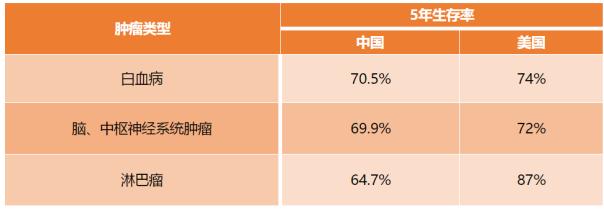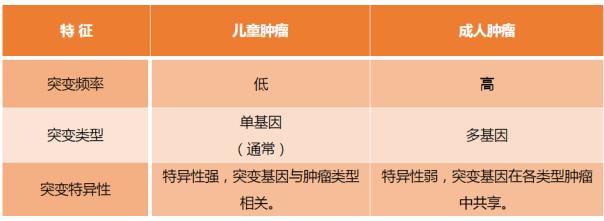Genome-wide analysis: panoramic construction of childhood tumor mutant genes March 19, 2018 Source: Sina Pharmaceutical In recent years, with the mapping of the human genome map and the explosive development of the new generation of genome sequencing technology, we have completely changed our understanding of cancer. These advances have laid the foundation for precise treatment of cancer. Recently, two papers were published in Nature, which is the first publication of a genome-wide analysis report on childhood cancer. In the first study, Gröbner et al. performed a full exon or genome-wide sequencing analysis of 961 cancer samples covering 24 cancer types. Central nervous system tumors were the focus of this analysis. In the second study, Ma et al. analyzed 1,699 cancer samples, especially leukemia, covering six tumor types in a similar manner. These studies provide a rare "window" for understanding children's cancer mutant gene maps. 1 , children's tumors: rare and special Compared with adult tumors, childhood tumors are rare, accounting for only 0.6%-0.8% of all tumors. The incidence rate of children aged 0-14 years is about 14.6/100,000. According to statistics, there are 3-4 million new children with malignant tumors in China each year, of which leukemia accounts for 1/3. Although childhood tumors are rare, they still occupy an important position in childhood deaths. According to the third death cause survey in China, the ranking of malignant tumors in children's death in China is shown in Table 1. Table 1 Ranking of malignant tumors in children's death in China Leukemia ranks first in the incidence and mortality of cancer in children in China, accounting for about 40% of childhood malignant tumors. Sorted according to the incidence rate, followed by central nervous system tumors, lymphomas and malignant tumors derived from bone, kidney, liver, thyroid, ovary, testis and oropharynx. Childhood malignancy is one of the few cancers that can be cured. The 5-year survival rate of tumors represents the level of cancer diagnosis and treatment in the country. The 5-year survival rate of children in the United States averages 78%, and the 5-year survival rate of children in China averages 72%. The 5-year survival rate of children's tumors in the two countries is shown in Table 2. Table 2 Comparison of 5-year survival rates of children with tumors in China and the United States From the perspective of disease spectrum, childhood tumors are quite different from adult tumors. Adult tumors are mainly lung cancer, esophageal cancer, and intestinal cancer, and 80% of the causes are related to environmental factors. Children's tumors are mainly divided into two major categories: solid tumors and hematological tumors. The cause of the disease is more related to heredity. In the treatment of childhood malignancies, drug development is a shortcoming. At present, there are almost no anti-tumor drugs for children. First, because the total number of patients is too small, the pharmaceutical companies are reluctant to invest in research and development; and because of the restrictions of the regulations, some drugs with better effects cannot be made on children. Clinical Trials. 2 , genome-wide analysis: clarify the difference, looking for drug targets The genomic analysis report for childhood cancer mentioned above is part of a campaign to use genomics to fight cancer in children. Around the world, researchers work together to share genomics data, techniques, and cell lines that can be used to study these diseases. Taken together, the report reveals four key points of childhood tumor mutations. First, children's tumors have fewer genetic mutations and chromosomal structural variations than adult cancers. For example, Gröbner et al. reported a gene that has a 14-fold lower mutation rate in childhood than adult cancer. In addition, both groups of researchers found that the total number of mutations in the childhood cancer genome was positively correlated with patient age. These findings are consistent with the idea that cells mutate with age. Second, unlike adult cancers with multiple mutant genes, childhood cancer is usually caused by a single mutant gene. For example, in the analysis of Gröbner and his colleagues, 57% of cancers are caused by a single mutant gene. It is well known that adult cancers tend to accumulate a variety of mutations during the development process, which is a cause of drug resistance, and also interferes with the researchers' screening of pathogenic genes. Third, children and adults have large differences in tumor mutated gene maps. In children's tumors, only 30% of the significant mutations were identified by Gröbner and his colleagues; and Ma and his colleagues published reports that children's tumor mutation maps overlap with adults by only 45%. Fourth, and perhaps most interesting, mutant genes are specific in childhood cancer. Mutant genes overlap very little in different types of childhood tumors, in stark contrast to adult cancers, as different types of adult cancers "share" the same genetic mutations more frequently. Current findings may reflect different pathways for cancer development in adults and children. The above four points describe the basic outline of the report. The differences in the mutated genes between childhood tumors and adult tumors are shown in Table 3. Table 3 Differences in mutated genes between childhood tumors and adult tumors 3. Conclusion Childhood cancer is a rare tumor that requires ongoing collaboration and data sharing to collect enough samples from each type of tumor for analysis. These new findings have great enlightenment on the pathogenesis, detection methods, therapeutic drugs and even precise treatment of childhood tumors. This is a critical step that paves the way for the next step in the analysis of large-scale childhood tumors. Sweeteners are Food Additives that sweeten soft drinks. Sweeteners can be divided into nutritional sweeteners and non-nutritional sweeteners according to their nutritional value. According to its sweetness, it can be divided into low sweetness sweetness and high sweetness sweetness I flavor; According to its source can be divided into natural sweeteners and synthetic sweeteners. Natural sweeteners include stevia, grosvenin, licorice, disodium glycyrrhizinate, tripotassium glycyrrhizinate and trisodium. Mogroside V,Compound sweetener,Stevia Leaf Extract,Monk Fruit Extract,Fructus Monordicae Extract Xi'an Gawen Biotechnology Co., Ltd , https://www.amulyn-bio.com

